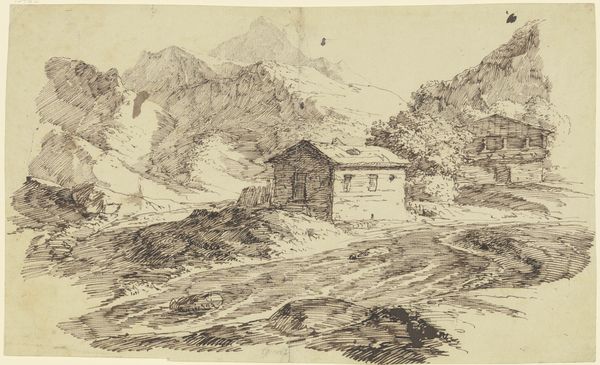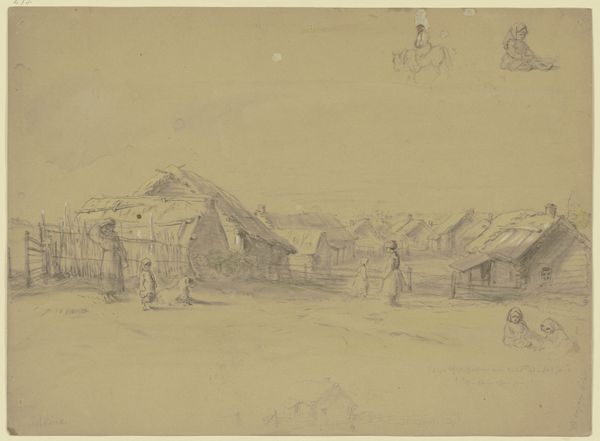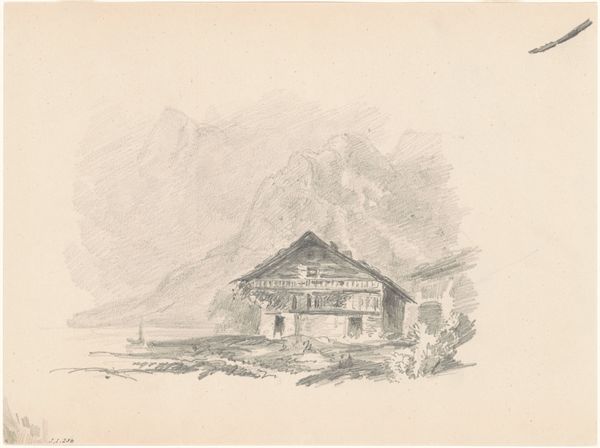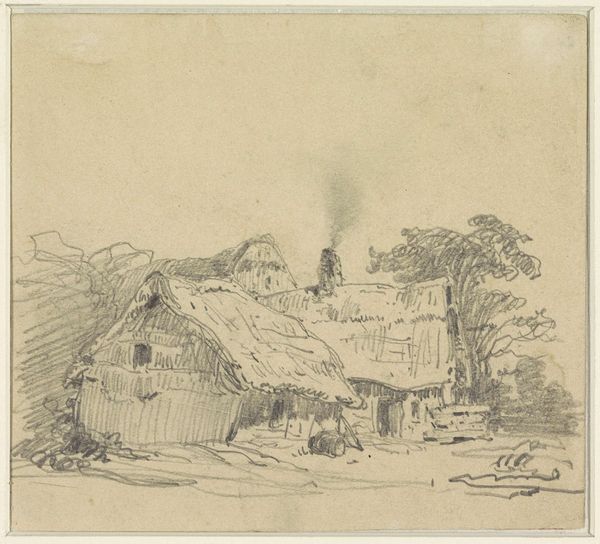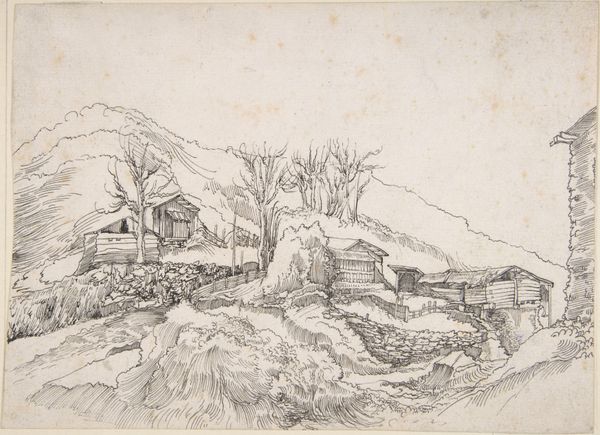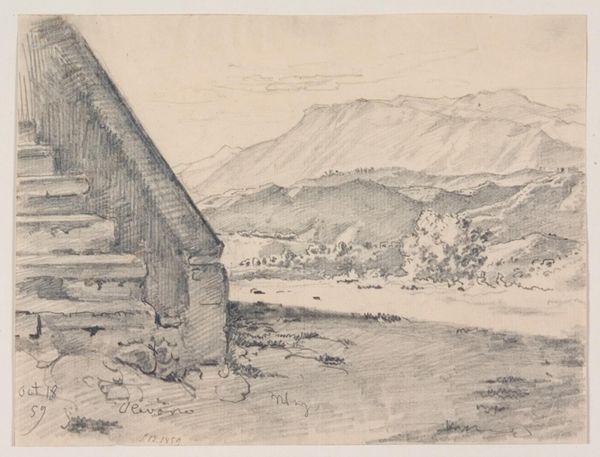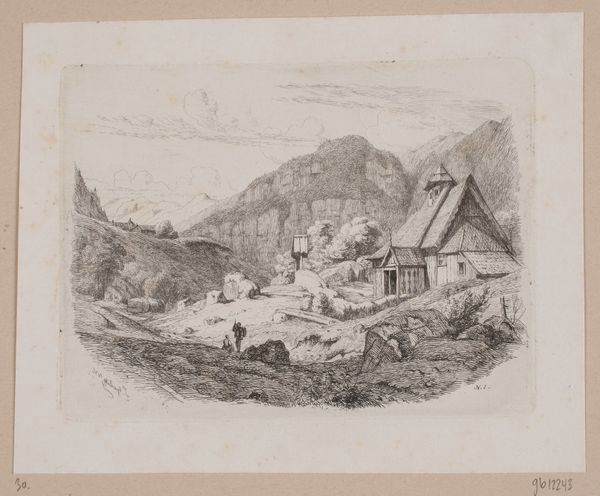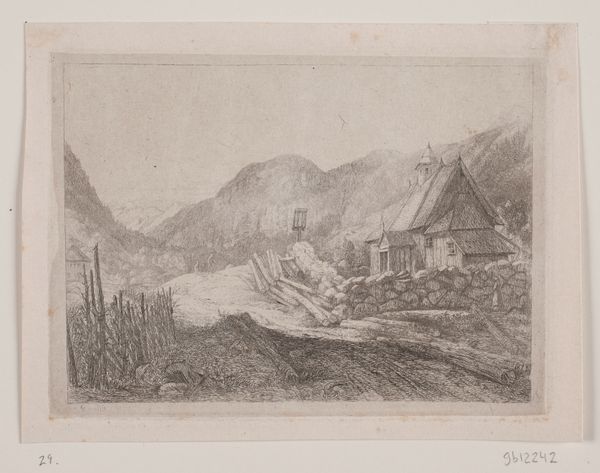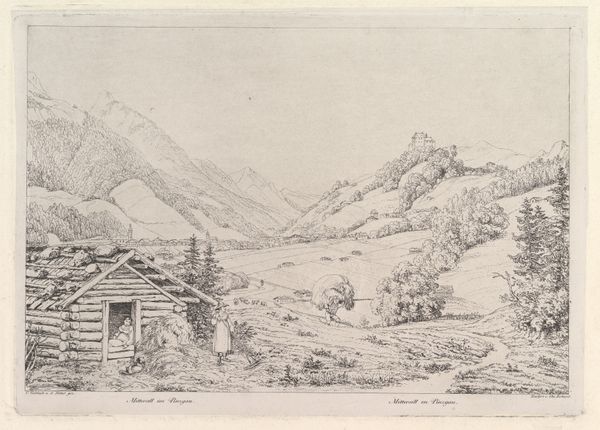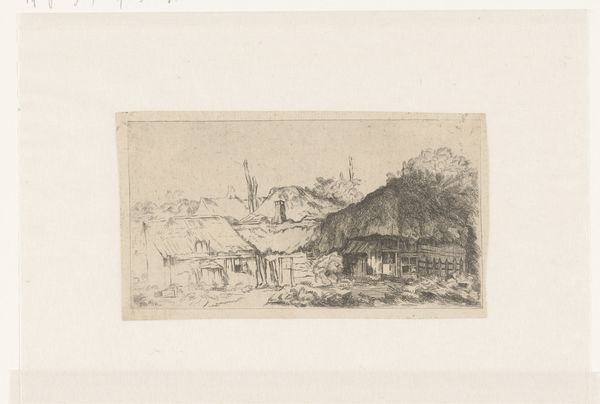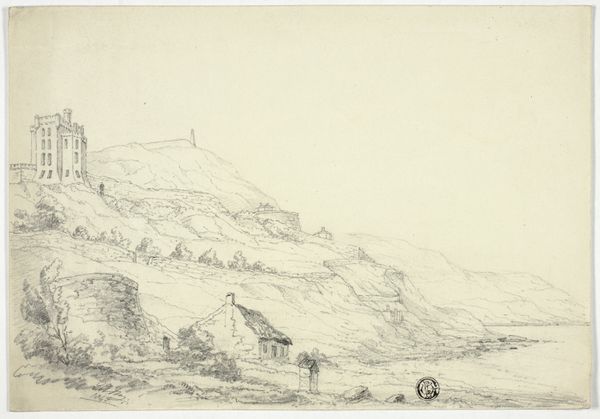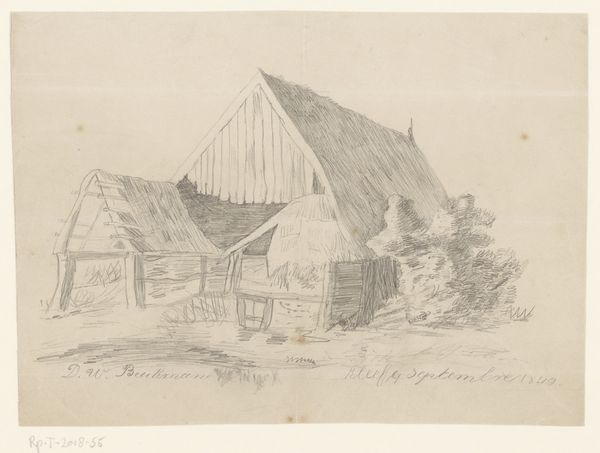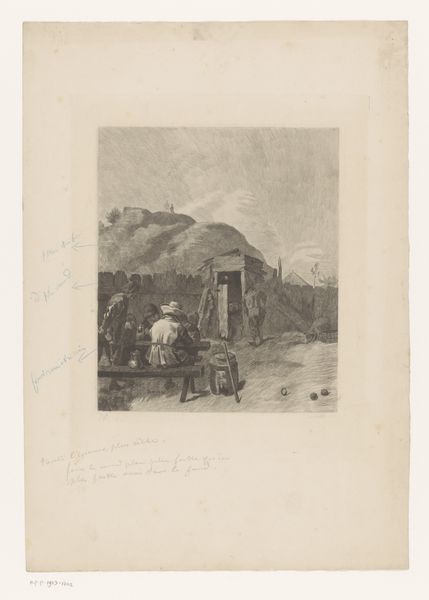
drawing, print, etching, ink
#
drawing
# print
#
etching
#
pencil sketch
#
landscape
#
ink
#
ink drawing experimentation
#
geometric
#
pen-ink sketch
#
mountain
#
line
#
sketchbook drawing
#
realism
Dimensions: height 132 mm, width 158 mm
Copyright: Rijks Museum: Open Domain
Editor: This is "Berglandschap met twee huizen," or "Mountain Landscape with Two Houses," dating sometime between 1868 and 1912, and made with ink, etching and other printmaking techniques. It has an intimate scale and a certain quiet mood. What strikes you most about this landscape scene? Curator: I am immediately drawn to the labor embedded within this piece. The artist's hand is evident in every etched line, revealing the meticulous process of transforming raw materials into art. Note how the depiction of the houses emphasizes their construction: logs stacked and joined. Editor: So you see the process of *making* the artwork itself as being as important as, or maybe more important than, what it represents? Curator: Exactly! And also consider what is depicted – humble dwellings in a rugged landscape. The piece speaks to a relationship between human labor and the natural environment. It invites us to consider the material conditions of rural life. What purpose might those buildings have served in this harsh terrain? How were they built, maintained? Editor: It makes me wonder who lived there and how they interacted with the land. You almost get a sense of the materials used to build the houses and what life was like inhabiting these houses and working this land. Curator: And that labor, both artistic and depicted, has an economic and social dimension we must acknowledge. Where was this printed? For whom was it intended? Editor: Thinking about it in terms of labor gives me a whole new appreciation for the drawing's quiet impact! It feels a lot less romantic, more grounded somehow. Curator: Precisely. By attending to the material aspects, we move beyond a simple appreciation of scenery to an engagement with the processes that shape our world and its artistic representation.
Comments
No comments
Be the first to comment and join the conversation on the ultimate creative platform.
